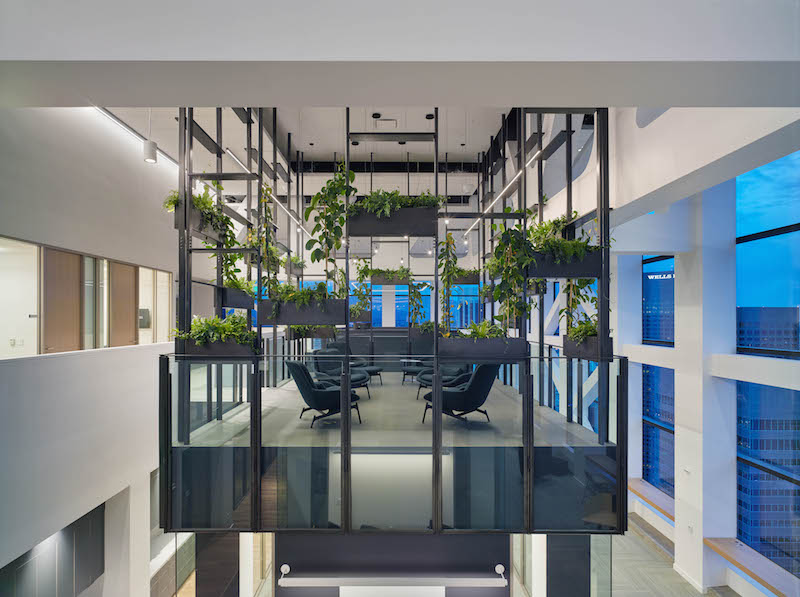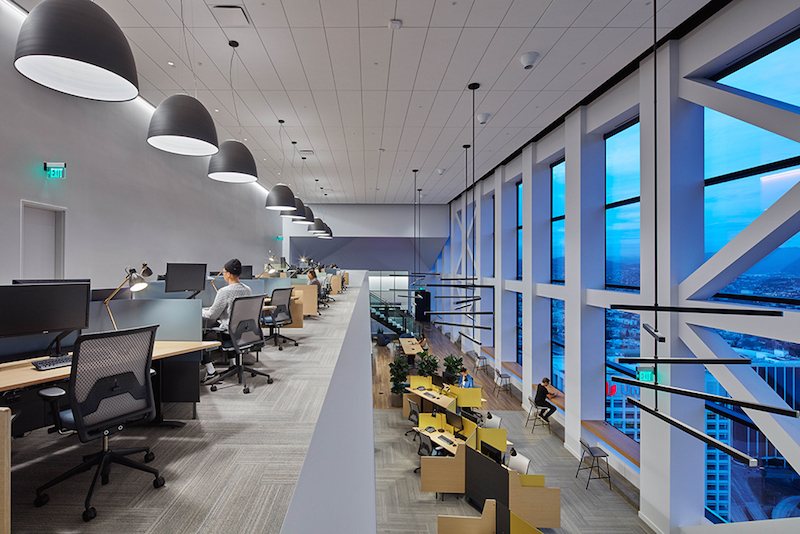When Joe Lozowski took over Tangram Interiors about 15 years ago, the Los Angeles-based distributor of office furniture was down on its heels. “Just being a furniture provider was not an exciting story,” recalls Lozowski about a company that dates back to 1963.
So the first thing he did after assuming control was to reach out to architects, designers, and clients about what they wanted from companies like his.
Fast forward to the present: Tangram Interiors has six furniture dealerships in southern California and 300 employees. It is the area’s second-largest flooring contractor. And under Lozowski’s leadership, Tangram has diversified into furniture customization (more than 40 of its employees are designers), fabrication, technology, and a “move management” business called Tangram Onsite.
Tangram Interiors’ revenue is expected to hit $180 million in 2017, from $127 million in 2014. (Add another $20 million or so from direct sales via Steelcase, its main furniture supplier.) Its growth engines are a custom furniture division Tangram Studio, which Lozowski started in 2004, and whose sales are projected to reach $12 million in 2017, from $7.75 million in 2014; and Tangram Technology, started in 2013, which is on pace to hit $5 million in revenue this year from $2.3 million in its first full year in operation.
Lozowski, 58, the company’s president and CEO, says his goal this year is to expand its Studio brand to a national level. He told GlobeSt.com that Tangram currently is installing projects for clients in Seattle (where it’s working with Juno Therapeutics, a biotech firm, to co-design furniture for 12 floors and build technology into that furniture), Portland, San Francisco, Dallas, Chicago, and New York.
Lozowski recalls that his company’s path toward diversification began when, around the time he took over Tangram Interiors, he was approached by a client who wanted furniture “that looked like it was made at Home Depot,” with a rough-hewn, DIY appearance. He accepted that commission, which got him thinking “maybe this is something we can make a business from.”
Tangram Interiors is not an interior design firm, Lozowski explains. Its design team, which includes 45 consultants, works with manufacturers, as well as its clients' designers, architects, engineers, and project managers to develop schematics for resilient workplaces, a concept borrowed from Steelcase that views office space as an adaptable ecosystem that evolves over time. Its principles revolve around design for wellbeing and providing employees with ranges of options within the workplace.
 Boston Consulting Group's offices in downtown Los Angeles include 30 meeting rooms and 24 private offices. Image: Courtesy Tangram Interiors.
Boston Consulting Group's offices in downtown Los Angeles include 30 meeting rooms and 24 private offices. Image: Courtesy Tangram Interiors.
Tangram Interiors’ client list includes Perkins + Will, Loyola Marymount College (with which it has worked for 10 years), Hulu, Brookfield Residential, Experian, Intuit, and UCLA Health. Tangram Studio helped with the furniture design for Tangram Interiors’ headquarters. (Lokowski refers to his showrooms as “learning labs.”)
Among Tangram Studio’s more recent projects is its collaboration with Boston Consulting Group (BCG) and the design firm Shubin Donaldson to create a new concept for the 45,000 sf of office space that BCG occupies in the north tower of City National Plaza in downtown Los Angeles. Tangram Studio’s research discovered that most of BCG’s consultants were in the office only 25% of the time. So its design solution includes 130 traditional workstations and 80 “touchdown” spaces with standing height stations incorporated into metal railings, lounge seating, and semi-private spaces throughout the office.
The design for this project includes 24 private offices and 30 meeting rooms within the office interior, leaving the perimeter open to allow for better outside views.
Lozowski started Tangram Technology after hearing from clients about how they couldn’t find reliable contractors that could coordinate the details between office design and technology. He says that, except for two big providers, this sector remains highly fragmented. Opportunities lie in the fact that “beside your chair, there’s nothing in an office that isn’t attached to a wire.”
Lozowski observes that most office designs lack “vision” because too many clients are still focused on what’s the least they can spend. He says the key to successful office furniture design is “mass customization.” And what’s winning clients over the Tangram Interiors is “that people love we’re co-designing with them.”
Related Stories
| Oct 12, 2011
Building a Double Wall
An aged federal building gets wrapped in a new double wall glass skin.
Office Buildings | Oct 12, 2011
8 Must-know Trends in Office Fitouts
Office designs are adjusting to dramatic changes in employee work habits. Goodbye, cube farm. Hello, bright, open offices with plenty of collaborative space.
| Oct 12, 2011
FMI’s Construction Outlook: Third Quarter 2011 Report
Construction Market Forecast: The general economy is seeing mixed signs.
| Oct 11, 2011
Pink light bulbs donated to Society of Memorial Sloan-Kettering Cancer Center
For every Bulbrite Pink Light Bulb that is purchased through the Cancer Center Thrift Shop, 100% of the proceeds will be donated to help support breast cancer research, education, screening, and treatment.
| Oct 11, 2011
ThyssenKrupp elevator cabs validated by UL Environment
The conclusive and independent third-party validation process is another step toward a green product line.
| Oct 11, 2011
Ballard Spahr launches real estate recovery group
The new group represents an expansion of the company’s Distressed Real Estate Initiative, which was launched in 2008 to help clients throughout the country plan, adapt and prosper in a challenging economic environment.
| Oct 11, 2011
Onex completes investment in JELD-WEN
With the completion of the JELD-WEN investment, Onex Partners III is approximately 40% invested.
| Oct 7, 2011
GREENBUILD 2011: UL Environment releases industry-wide sustainability requirements for doors
ASSA ABLOY Trio-E door is the first to be certified to these sustainability requirements.
| Oct 7, 2011
GREENBUILD 2011: UL Environment clarifies emerging environmental product declaration field
White paper defines EPD, details development process, and identifies emerging trends for manufacturers, architects, designers, and buyers.
| Oct 6, 2011
GREENBUILD 2011: Growing green building market supports 661,000 green jobs in the U.S.
Green jobs are already an important part of the construction labor workforce, and signs are that they will become industry standard.

















